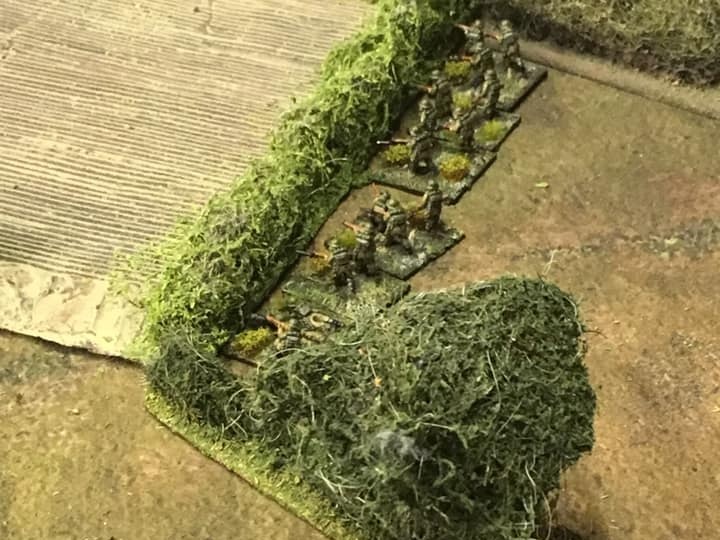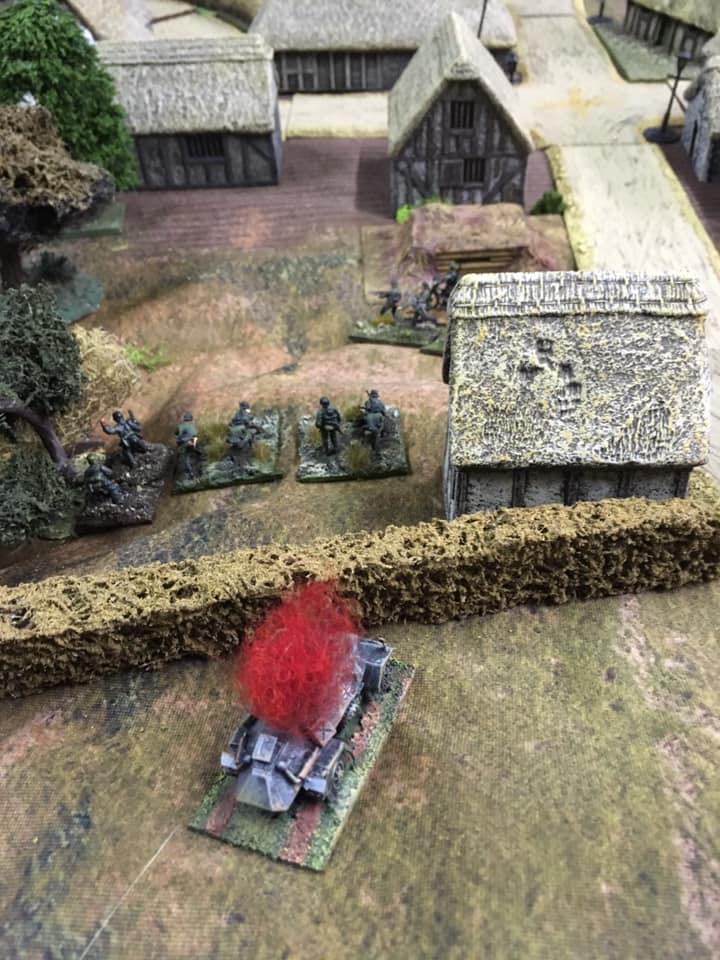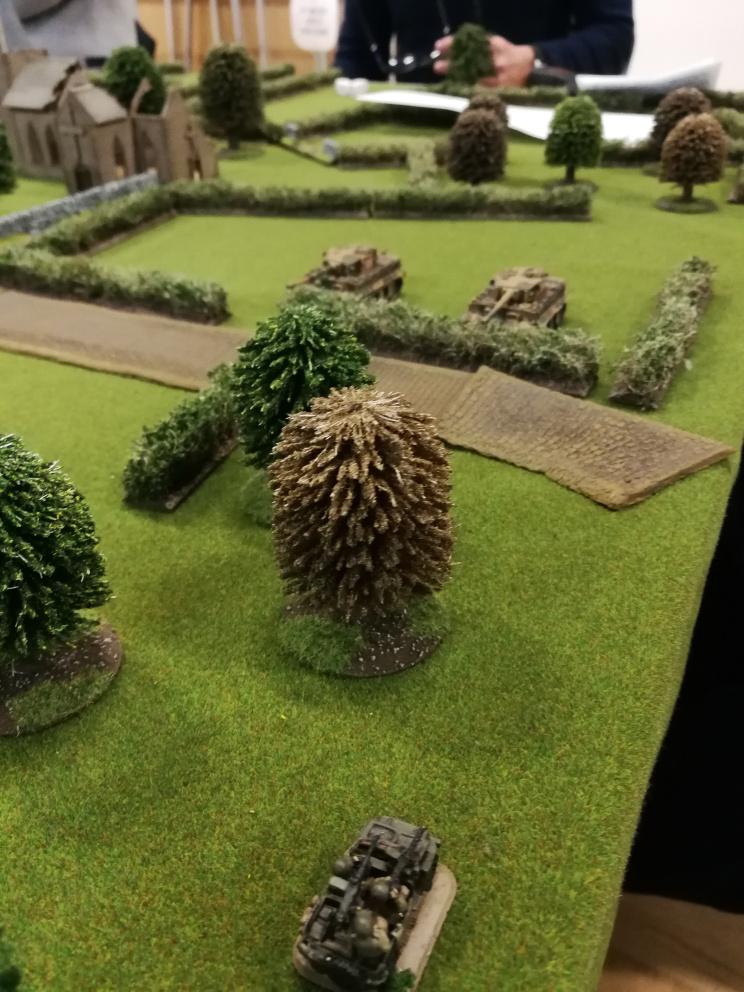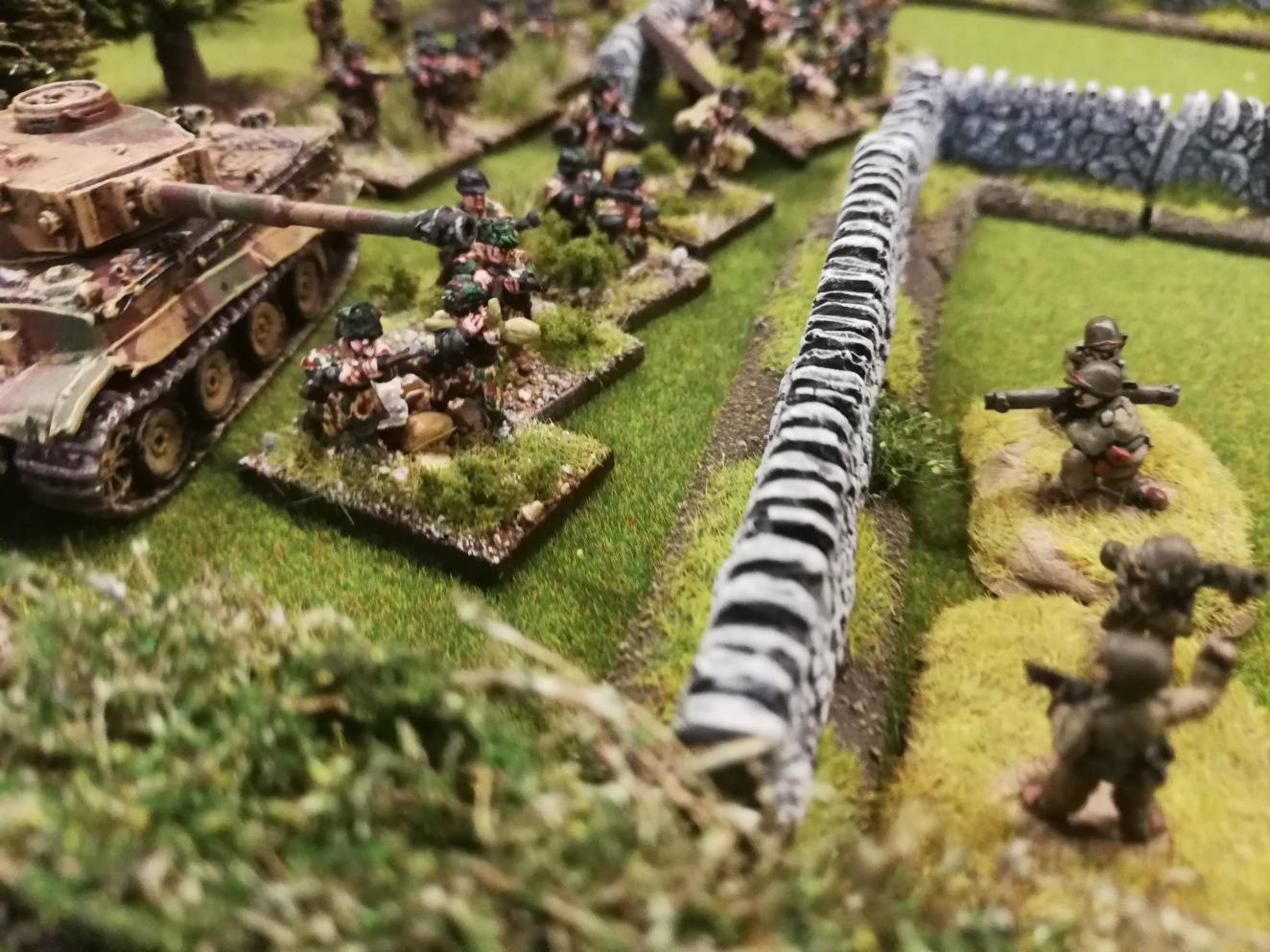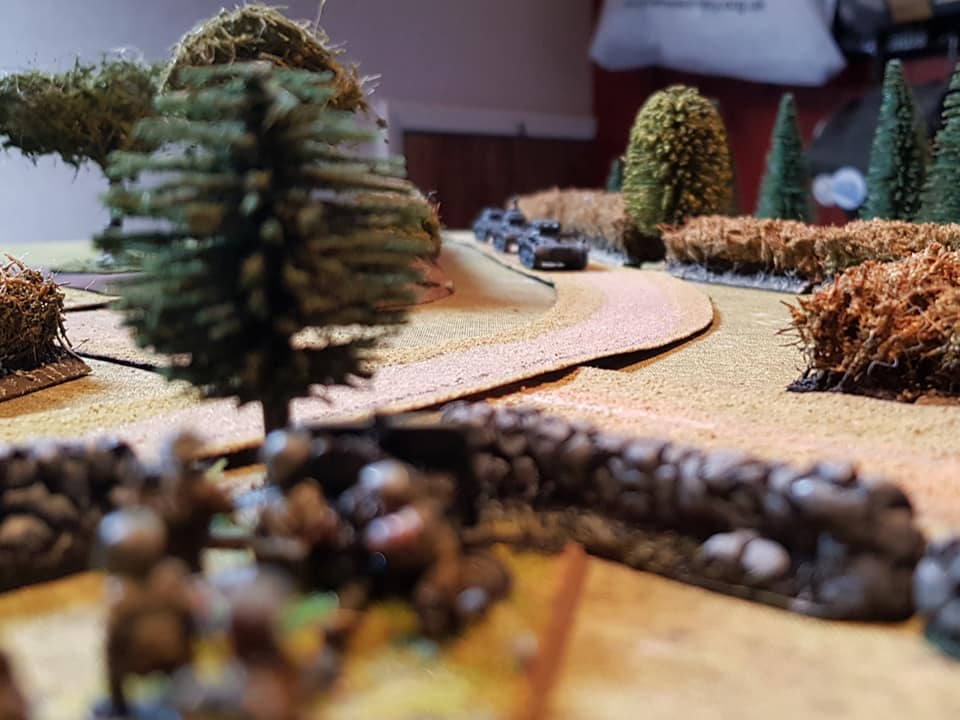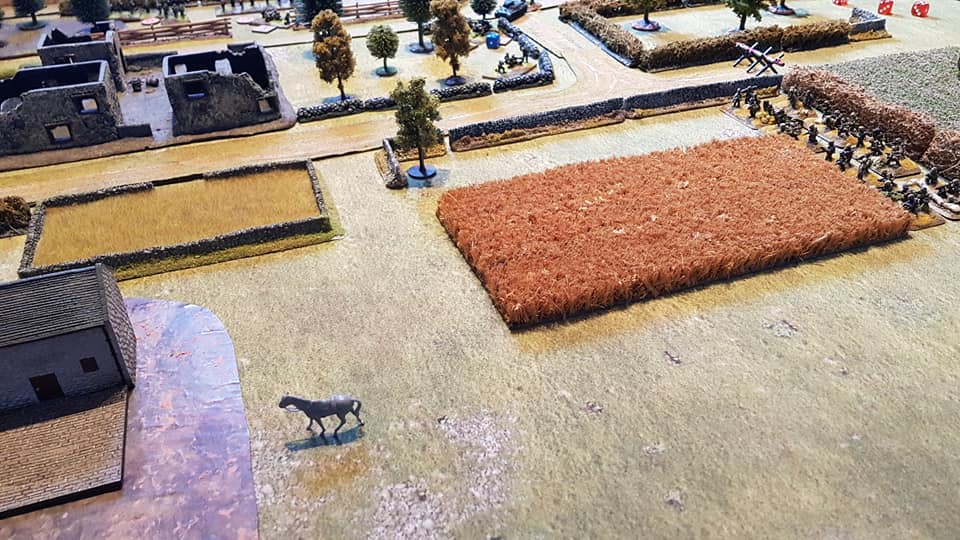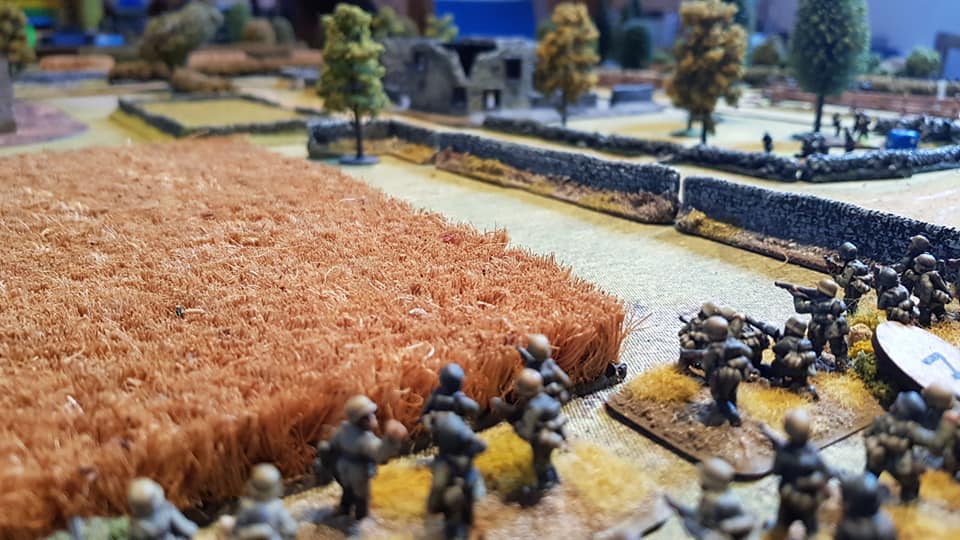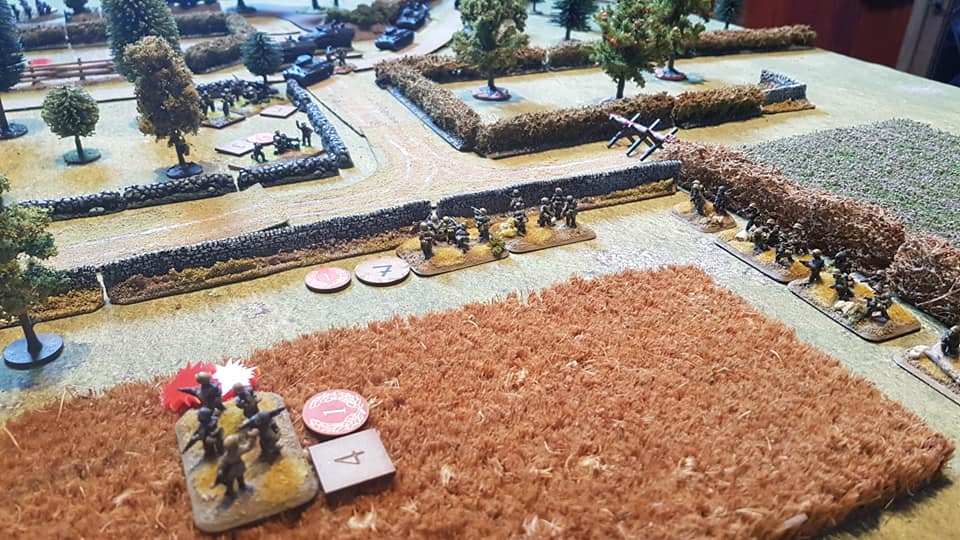Szack, Eastern Poland, 28th – 29th September 1939.
This game is taken from the TFL supplement: The September War Part Two.
Part of the narrative in the booklet is thus:
Soviet troops consisting of the 112th Infantry Regiment, some 13.000 soldiers supported by fifteen T-26 tanks and fifteen guns, arrived at the village of Szack on September 28th.
The Polish force near the village numbered 4.000 men of the Border Protection Corp, including General Wilhelm Orlik- Rückermann, and sixteen anti-tank guns.
Having taken the village, the Soviets then charged the Polish positions with infantry
supported by the T-26 tanks. The Poles waited until the Soviets were right on top of them before opening fire with their antitank guns, destroying eight tanks.
The Polish troops now launched an all-out counterattack: covered by their artillery, the soldiers of the Border Protection Corps charged at their enemies with bayonets fixed. By the afternoon the village was back in Polish hands.
The game, played last Friday, takes up the story from that point on. Charged with the task of retaking the village the Soviets again attacked in force. Dave again brought his Polish figures and was ably assisted by Barry whilst Steve brought his early Russian troops to be used by myself, Richard and Bruce. Steve and Archie elect to play umpire and tea masher.
A beautiful set of cards
As ever scale is 20 mm and we played on a 1.5 sized version of the scenario giving us a table width of six feet and a length of just over nine. Because of this increase in the grand scale we again adopted the use of the Lard; one lard being the equivalent of 11/2 inches.
The Russians all deployed on Blinds and had a couple of false Blinds available to them. The deployment area was the 1st foot and a half in across the entire southern base edge whilst the Polish were considered to be in the process of recovering the lost ground and so only 60% of their force was available to start the game under hidden Blinds with the other 40% being available upon the turn of the Polish Blinds card.
The terrain was mainly open vast areas of clear space for the Polish troops to sweep with their machine guns and anti-tank guns; the majority of the wooded area being around the two roads on the on the Russian baseline.
Having chosen their objectives play began and each side took things rather cautiously. The Russians had deployed tanks and a couple of Blinds on the two roads and made quick headway towards a village. The downside of that was that they became within auto spotting range, exposing the vehicles and disclosing the Blinds. Behind them and in the trees were their infantry and support weapons.
The Russians had the disadvantage of not having their vehicles netted into a radio net and in that respect every vehicle was its own unit waiting to be activated upon the turn of its individual card. This took a bit of getting used to at every game we've played so far have allowed AFVs to move by platoon but the Soviet play soon got used to it.
A couple of Tea Breaks later and the Soviets had brought out most of their infantry combat the mass of anti-tank guns that had set up around the Polish objective, the farm next to the church. Those guns had been pretty effective from the off, one gun disabling the forward T-26 on the left flank. It took the draw of an heroic Soviet leader card to have the local tank commander open up his turret, climb down off the tank with his magic spanner in hand and ‘repair ' the temporary fault preventing movement and thereby release the vehicle back into play. For it was certainly needed. It was looking bad for the Russians with all that open terrain to cross to get to their tormentors.
A Soviet T-26 takes damage
And then it happened as if by magic: Steve drew from the pack the Human Wave card enabling all the left hand flank Soviet infantry platoons to join together in one suicidal dash towards Polish defences. Whilst not making a particularly great movement throw a lead section did reach the walls of the farmyard and Polish anti-tank guns. They had support within distance and annihilated the gunners who put up minimal resistance against the organic onslaught. Soviets lost a couple of men in exchange for eliminating their worst threat. Technically at that point the Soviets had one having completed their mission of capturing one objective intact and having no hostile troops within close proximity however either by luck or judgement we continue to carry on.
The Soviet Human Wave attack is successful in clearing the farmyard of Polish anti-tank guns
The Soviet right flank showing the advance of the three T-26 tanks and the Polish infantry platoon defending the cemetery. The objective is indicated by the streetlamp adjacent to the cemetery entrance
Several opportunities for Soviet air support came and went as did chances for the Polish to obtain their off-board artillery, the forward observation officer frustrated at the time being taken to deliver the first ranging shot. That was disappointing as the table was festooned with Soviet infantry squads spread out in the open across a large area-a very tempting artillery target indeed but alas no reply from the battery.
On the right flank Soviet armour had advanced, probing towards the village with three T-26 light tanks cautiously approaching a previously located Polish infantry platoon in the buildings across the road from the church. Using a combination of move and fire techniques they advanced, spraying everything they could see with their machine guns but, given the amount of cover the Polish troops enjoyed, the results of that harvest were few and far between. Very rapidly one of the tanks was immobilised by fire.
The infantry on that flank had remained in the wards on the southern edge but cautiously advanced to give some belated fire support to their tanks; who were close to gaining the second objective. The Polish players so that dispatched a section of infantry across the road into the cemetery to contest the second objective in the churchyard. That infantry unit became the focus of firepower on that flank as it provided the only barrier to total success for the Soviets.
A view of the church and the cemetery with the adjacent objective number one. The Soviet T-26 tank is engaged in a firefight with the Polish infantry section to the top of the picture. They remained a thorn in the side for a significant period until defeated by weight of firepower from supporting Soviet armoured fighting vehicles .
Over on the left flank a Polish platoon had deployed in the north-westerly farmstead on the southern side of the road and they rapidly engaged the swarms of Soviet infantry who, following their mass attack, had remained milling about in the open without orders. The slaughter was relentless and every available gun was trained on the Polish threat in the farmyard. The firefight was significantly in favour of the Polish behind their cover and slowly Soviet losses in the centre and left increased to an almost critical level.
The first objective was located in the central farmstead south of the main road. This is where the battery of three Polish anti-tank guns had set up. They were subsequently overrun and destroyed by a Soviet Human Wave attack. The remnants of that attack are now seen in around the farmyard, with some precariously remaining in the open and taking heavy fire from the barns at the top of the photograph.
We had played for about 2 1/2 hours now with limited beverages being consumed: the game was that intense!
However looking at the board after the heroic Polish section had finally succumbed to the weight of firepower on the right flank and decided to bug out leaving the objective undefended it was agreed that the Russians had a achieved a complete victory albeit as some heavy cost. 'Uncle Joe' didn't mind as he had got millions more men ready to run into the maelstrom that would follow for the next four years.
Tim Whitworth
Soviet infantry sections in the south-east woods











